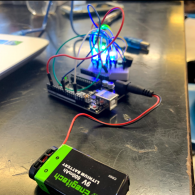Problem To Solve
Our team would like to address the problem of human litter collecting in our waterways. Many of our local waterways contain a large amount of man-made debris; much of this debris flows into our creeks and rivers through storm drains and the connected sewage system. This problem is intensified in areas such as ours that have combined sewer systems. These sewer systems allow water to flow from the streets to outfall pipes, but they also introduce a large amount of pollution to outside environments. In times of high surface runoff, such as heavy rain, these systems can back up which can result in raw sewage, including man-made objects, flowing directly from toilets into waterways. This human debris can harm physical habitats, transport chemical pollutants, harm aquatic life, and interfere with human uses of rivers and streams.
Most of the debris in waterways come from land based activity. This includes trash from the streets, trash cans or landfills. Those that end up in the sewage system are most commonly cigarettes, plastic bags, food containers, bottle caps and plastic bottles. To most people these items have no impact; it's litter in the street one day and it's washed away the next and they never think of it again. This trash doesn’t just disappear though. It’s washed down street sewers and cleared into nearby waterways. Animals in and near streams have been known to consume the trash left in waterways which can severely harm or kill these animals. Not only has our litter seriously harmed wildlife, our waste has also damaged their ecosystems and food chains. It is not only wildlife that this affects; humans can also be directly harmed by aquatic trash. Pollution in our lakes and rivers is a real public health hazard. Some objects can be broken down over time and filter into water that is consumed by humans. People can also step on things while swimming, or just walking near streams polluted with trash. Not to mention that polluting the earth is harming the place that we live and we absolutely need to survive.
There are some technologies currently used for debris control in river systems, but most of them don’t function well and have to be frequently checked and cleared. Grates over storm drains filter out larger debris but they still don’t prevent smaller pieces from entering the sewer system. Also when these grates become clogged they don’t allow runoff from the streets to drain into the sewage system which results in flooding. There are also caps for outfalls, but these caps tend to become clogged with litter which prevents the free flow of water causing flooding as well. Our team hopes to help by improving the technology behind these caps by using smaller nets to catch the debris and using a tensioning system to send alerts when they are full to capacity. We also want to make this solution consist of parts that are affordable and easy to replace. Our solution may not completely solve this issue by itself, but it will help with preventing the problem from getting worse while we figure out how to improve the issue we have already created.

- Net solution team working on small-scale prototypes.
- Electronics team learning to use Arduino.


